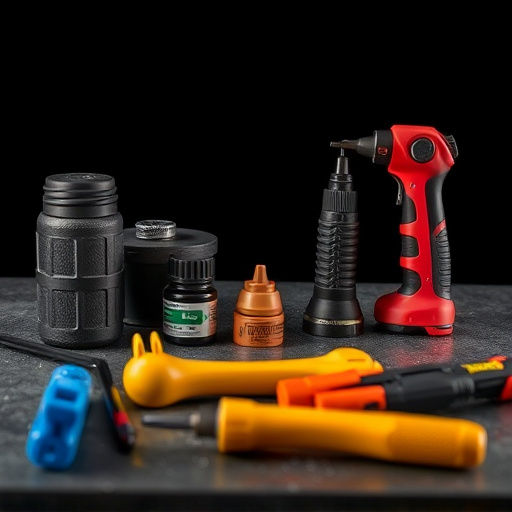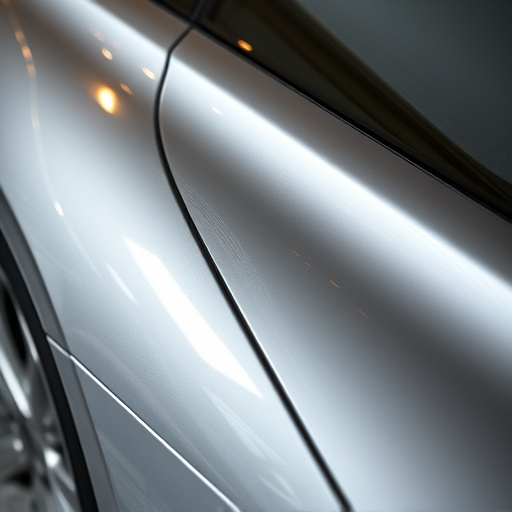While fast dent repair techniques offer speed and convenience for minor dents, they are temporary solutions that may leave traces and fail to address structural issues. For premium vehicles like Mercedes-Benz, meticulous methods like specialized pressing and auto painting, though time-consuming, ensure minimal damage traces and maintain vehicle value. Choosing the right technique between quick fixes and detailed restoration balances speed and quality, preserving both your car's structural integrity and visual appeal while considering budget, damage extent, and future resale value.
When it comes to dent repair, two primary approaches stand out: fast and detailed. While fast repair methods offer quick fixes and temporary solutions, they may not address the underlying issues fully. In contrast, a detailed approach takes more time but ensures lasting results. This article explores these key differences, helping you choose the right dent repair technique for your vehicle’s optimal health and aesthetics. Learn about the pros and cons of each method to make an informed decision.
- Fast Repair: Quick Fixes and Temporary Solutions
- Detailed Approach: Time-Consuming Yet Effective
- Choosing the Right Method for Your Vehicle's Health
Fast Repair: Quick Fixes and Temporary Solutions

Fast dent repair techniques are often sought after for their speed and convenience. These quick fixes are ideal when time is of the essence, such as in emergency situations or when a vehicle needs to be back on the road swiftly. Auto body shops specializing in fast dent repair use various methods like plastic welding, spot painting, or even temporary patches to restore the vehicle’s appearance quickly. While these solutions can pass inspection and get you back on the road, they are not permanent. In a mercedes benz collision repair scenario, for instance, a fast approach might be used for minor dents, but major damage would require more intricate, detailed work.
Auto repair shops offering fast dent repair services often focus on efficiency, using specialized tools and trained technicians to streamline the process. However, these temporary solutions are not suitable for those seeking long-lasting results. Unlike detailed dent repair techniques that ensure precision, strength, and a perfect color match, quick fixes may leave visible traces of the damage or fail to address underlying structural issues. As a result, vehicles repaired in this manner might require more frequent touch-ups or face further damage down the line, underscoring the importance of considering both speed and quality when choosing a dent repair technique.
Detailed Approach: Time-Consuming Yet Effective

The detailed approach to dent repair is a meticulous process that involves careful examination and precise techniques. It is a method often sought after by those who value perfection and want their vehicles to look as good as new. This technique takes more time compared to faster alternatives, but it ensures minimal to no trace of the damage. Skilled technicians use specialized tools to gently press out the dented area, matching the contour of the vehicle’s body precisely. Each step is critical, from the initial assessment to the final polishing, ensuring that the repair seamlessly blends with the rest of the car’s surface.
In the case of collision damage repair, especially for premium cars like Mercedes-Benz models, a detailed dent repair technique is indispensable. It not only restores the aesthetic appeal but also maintains the vehicle’s value and overall integrity. This meticulous approach demands patience and expertise, making it ideal for those who demand top-tier results in car dent repair.
Choosing the Right Method for Your Vehicle's Health

When it comes to dent repair techniques, selecting the appropriate method is pivotal for maintaining your vehicle’s structural integrity and aesthetic appeal. The choice between fast and detailed repair approaches should be guided by an assessment of your car’s overall health and specific needs. For minor dents and dings, a swift, cost-effective solution like a quick fix or paintless dent repair might be ideal. These methods can restore your vehicle’s exterior without extensive body work, preserving its value and original finish.
However, for deeper damage, complex shapes, or unique vehicle models, a more meticulous approach is required. Classic car restoration techniques or detailed auto painting may be necessary to accurately replicate the original appearance, ensuring precision and longevity. Considering factors like your budget, the extent of damage, and future resale value will help you decide between fast and detailed dent repair techniques, ultimately promoting the health and beauty of your vehicle.
When it comes to dent repair techniques, understanding the differences between fast and detailed approaches is key to making an informed decision. While fast repairs offer quick fixes and temporary solutions, a detailed approach ensures long-lasting results for your vehicle’s health. By considering factors like time, cost, and aesthetics, you can choose the optimal method that meets your needs. Incorporating modern tools and techniques, dent repair professionals provide tailored solutions, ensuring your vehicle regains its original appearance without compromising structural integrity.














